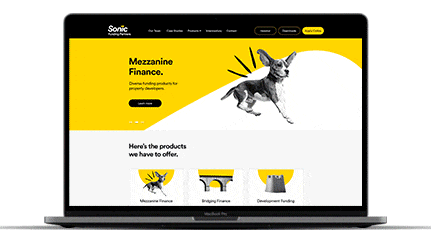Leading Tips for Creating an Impactful Web Site Layout That Converts
To achieve this, one must think about a variety of aspects, consisting of understanding the target audience, focusing on user experience, and maximizing for mobile platforms. The strategic use of compelling call-to-actions and a well-defined visual hierarchy plays a critical role in leading individuals through their trip.

Understand Your Target Audience
Recognizing your target market is basic to efficient site style, as it lays the groundwork for creating an interesting user experience. Identifying that your individuals are, including their demographics, choices, and actions, enables developers to customize the site's content, format, and capability to satisfy details requirements.
Carrying out complete market research is important in this procedure. Studies, meetings, and analytics can supply valuable understandings into user expectations and pain factors. By compiling this data, designers can develop individual personas that represent various sections of the audience, making sure that layout decisions are notified and appropriate.
Moreover, recognizing the target audience aids in choosing suitable style components such as color plans, typography, and imagery that reverberate with users. A web site that speaks directly to its audience promotes a feeling of connection and count on, motivating longer check outs and greater conversion rates.
Inevitably, a user-centered method to web site design not just boosts individual satisfaction yet likewise supports service purposes by driving engagement and commitment. By prioritizing the requirements and choices of the target audience, a site can successfully offer its function and achieve desired results.
Prioritize Individual Experience
To enhance the total performance of an internet site, focusing on customer experience (UX) is important (Website Design). A properly designed UX ensures that visitors can browse the site effortlessly, find details quickly, and involve with content meaningfully. This causes raised user fulfillment and higher conversion rates
Begin by implementing intuitive navigation. Menus ought to be rationally structured, enabling customers to situate vital locations of the site with marginal effort. Consistency in design components, such as color pattern and fonts, cultivates experience, which is critical for maintaining customer involvement.
In addition, consider the packing rate of your web site. A delay of just a few secs can bring about substantial drop-offs, as individuals are much less most likely to wait for a slow-loading web page. Simplifying images and maximizing code can boost performance and retain visitors.
By focusing on customer experience, you not only develop a much more satisfying atmosphere for site visitors however additionally strengthen your brand's integrity. Inevitably, an emphasis on UX is a financial investment in the long-lasting success of your internet site.
Maximize for Mobile Devices
Maximizing for mobile devices is essential in today's digital landscape, where a boosting variety of customers accessibility internet sites via smart devices and tablets. A mobile-friendly design not only enhances individual experience however likewise plays a considerable function in enhancing search engine positions. To attain this, it is vital to adopt a responsive design that automatically gets used to numerous screen sizes and orientations.

Packing rate is another critical variable; mobile individuals are generally less patient and anticipate quick access to info. Enhance images and utilize web browser caching to enhance efficiency. Finally, examination your site on multiple devices and screen resolutions to recognize and correct any kind of prospective functionality problems. By focusing on mobile optimization, you guarantee that your internet site stays competitive and effectively engages a more comprehensive audience.
Use Compelling Call-to-Actions
A website's performance frequently rests on its capacity to guide visitors towards wanted activities, making compelling call-to-actions (CTAs) crucial elements of layout. CTAs work as the pivotal points that direct users to engage with the site, whether that indicates making an acquisition, enrolling in an e-newsletter, or downloading and install a resource.
To produce efficient CTAs, clarity is critical. Use concise language that clearly interacts the activity you desire the see this here customer to take. Expressions such as "Get Begun," "Subscribe Free," or "Store Now" not just communicate seriousness yet additionally remove obscurity. The positioning of CTAs is similarly important; they should be strategically positioned throughout the webpage to ensure they are quickly visible, particularly in high-traffic areas.
In addition, think about using directional hints, such as arrowheads or photos, to direct customers toward these switches. By concentrating on these components, companies can significantly boost user engagement, driving conversions and eventually attaining their web site's goals.
Emphasis on Visual Pecking Order
Efficient internet site style counts heavily on a well-structured aesthetic power structure that guides customers through material effortlessly. By organizing components in a manner that focuses on details, developers can improve user experience and assist in decision-making. This entails utilizing size, shade, contrast, and spacing tactically check these guys out to attract attention to one of the most important parts of a website.
Making use of bigger fonts for headings and subheadings develops a clear distinction between various areas, allowing users to scan content easily. In addition, employing different shades for buttons and calls-to-action can catch individual focus and encourage interaction. Whitespace is one more crucial component; it protects against clutter and allows customers to concentrate on key messages without disturbances.
Pictures and graphics must enhance the message while additionally adhering to the well-known hierarchy, reinforcing the overall message (Website Design). Consistency in layout elements, such as color design and typography, further strengthens the visual power structure, making navigating user-friendly

Conclusion
In verdict, efficient site layout demands a detailed understanding of the target audience, prioritization of user experience, and mobile optimization. Ultimately, a well-executed website style serves as an essential element in driving customer activities and achieving service objectives.